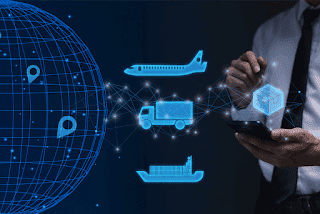The future of international logistics: trends and predictions
Logistics has always been a critical component of international trade, and its importance has only grown in recent years with the rise of e-commerce and global supply chains. But what does the future hold for logistics, in this article, we will explore seven trends and predictions that are likely to shape the future of international logistics.
- Greater Adoption of Automation and Robotics. From automated warehouses and fulfillment centers to self-driving vehicles, logistics companies are exploring ways to reduce their reliance on human labor.
- Increased Use of Predictive Analytics. Logistics companies can better anticipate future needs and optimize their operations by analyzing data on everything from customer demand to weather patterns. This can lead to faster and more efficient deliveries, lower costs, and higher customer satisfaction.
- Emphasis on Sustainability and Environmental Responsibility. In the future, we can expect to see logistics companies placing a greater emphasis on reducing their environmental impact using electric or hybrid vehicles, optimizing routes to reduce fuel consumption, and exploring alternative modes of transportation such as rail and sea.
- Greater Collaboration and Integration Across the Supply Chain. As supply chains become more complex and global, all stakeholders must work together to ensure smooth and efficient operations. Greater use of technology to facilitate communication and collaboration and more integrated logistics services encompassing everything from warehousing to transportation will be the way to do it.
- Increased Focus on Risk Management and Resilience. In the future, we can expect to see logistics companies placing a greater emphasis on identifying and mitigating risks, both within their operations and across the wider supply chain. This may involve greater use of data analytics to identify potential risks, as well as more robust contingency planning and disaster recovery measures.
- Growing Importance of Last-Mile Delivery. Optimizing last-mile operation may involve greater use of technology such as delivery drones and autonomous vehicles and new models for last-mile delivery such as crowdsourcing and parcel lockers.
- Continued Globalization and Expansion. As businesses seek to tap into new markets and supply chains become more global, logistics companies will need to adapt to new cultural, legal, and regulatory environments. This may involve greater use of local partners and suppliers, as well as more flexible and agile logistics operations that can adapt to changing market conditions.
By embracing these trends and predictions, logistics companies can position themselves for success in the dynamic and rapidly changing world of international trade.






Comments
Post a Comment